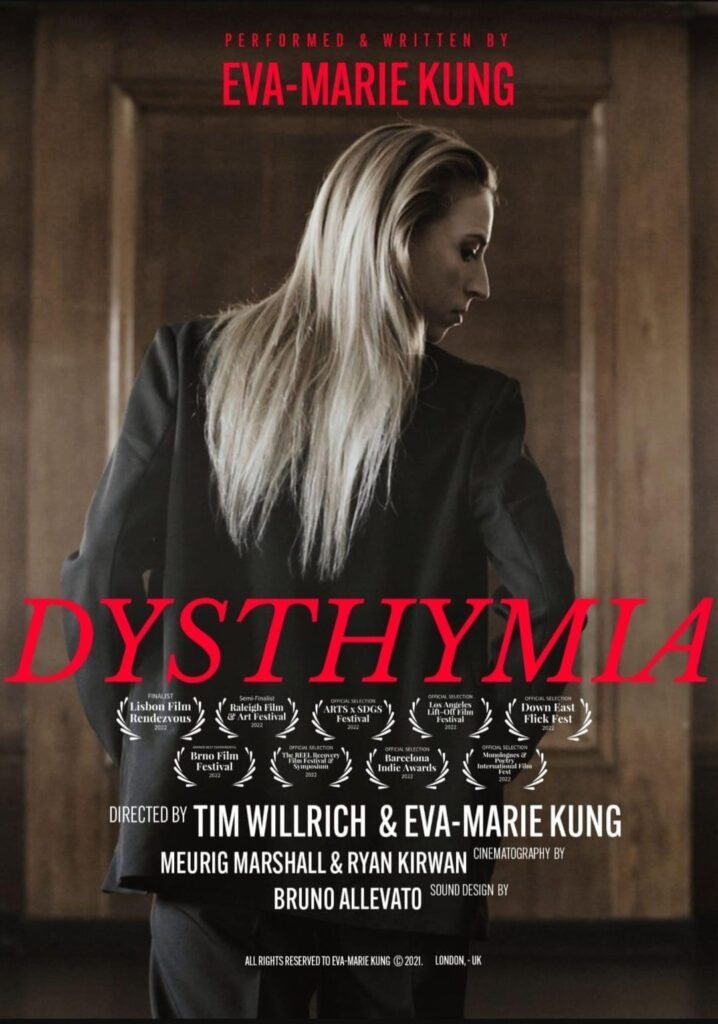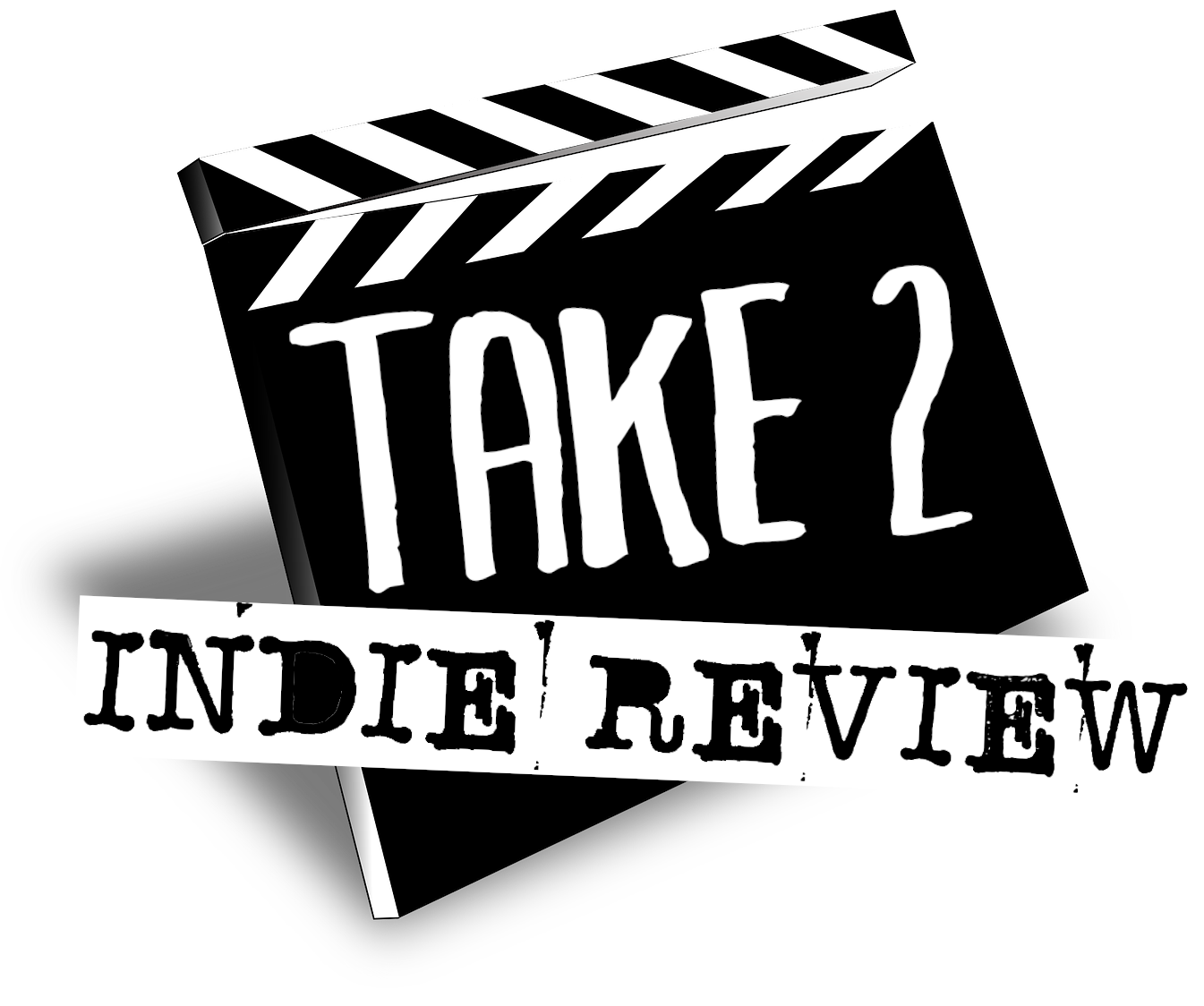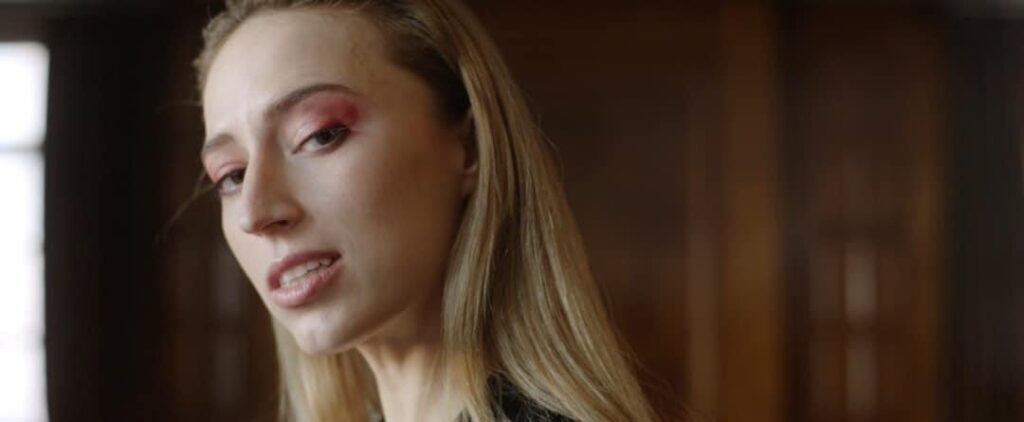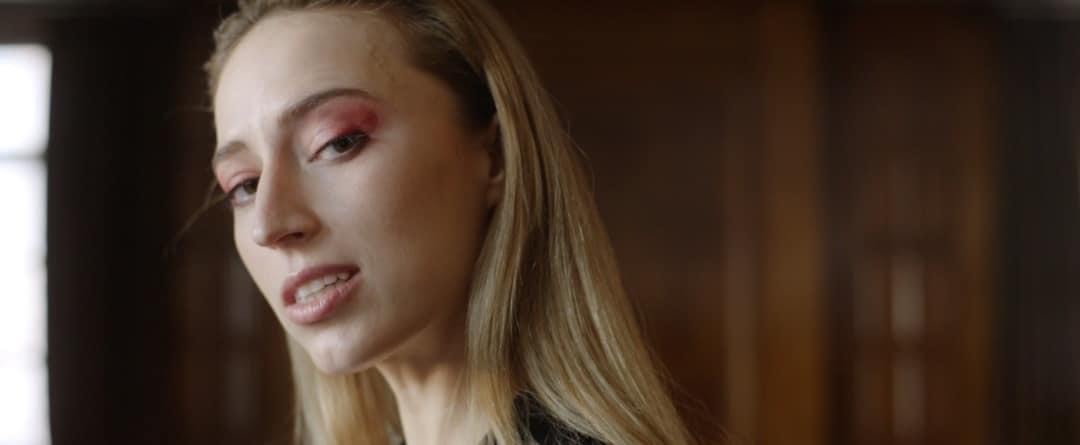When our mental demons come knocking, do we let them in? The protagonist of the short film Dysthymia, a young woman referred to only as “The Speaker,” has a war going on inside her mind, and she has something to say about the demons who are fighting it.
A thick-lined red title snaps into view, then a cacophony of eerie whispers and two ear-splitting bangs of a gavel fill the air. A young woman (Eva-Marie Kung), stands wide-legged center stage, commanding the space. This is “The Speaker,” someone tasked with presenting her mental health history and struggles to an invisible jury panel inside a courtroom. As the title of the film suggests, the Speaker’s case has to do with her dysthymia and the physical, mental, and emotional toll it’s taking on her, as well as her attempts at coping with it in a world that seems keen to ignore it. A form of mild but persistent depression, dysthymia nags at a person’s mind, creating “demons” (as the Speaker calls them) that must be contended with day after day.
What makes Kung’s film so unique, though, is that it extends into the world of the theatrical, poetic, and experimental. Here, normative dialogue is replaced by a beautifully lyrical monologue, spanning the alphabet to create a verbal tapestry of suffering, struggle, and the human psyche. Truly a poetic feat, Kung has written a soliloquy overflowing with gorgeous diction, Shakespearean syntax, and complex thought intended to make us as audience members think; there is no passive watching of this film, only deep engagement so that we might better understand what the Speaker goes through day after day as she fights against her depression.

Brimming with these emotions, Kung plays the nonspecific character of the Speaker well, capturing a woman who is authoritative and strong-willed as much as she is introspective and intelligent. She carries herself with aplomb, even in moments when she speaks cynically about the demons inside her mind or the people around her who mindlessly tell her to “be better” even though she knows she’ll never do enough for them. She commands the space, and we are hell-bent on watching her through to the end.
More than this, as the only character in the film the Speaker’s presence is a constant reminder of the truly idiosyncratic theatricality Kung is playing with as a director. Outside of her, the visual landscape is unburdened by frilly props and ornate set design, and even the film’s cinematography (Meurig Marshall and Ryan Kirwan) leans into this same idea. Like a scene from a play, Dysthymia narrows its focus as much as possible, using a consistent camera push towards the Speaker’s face that is only ever interrupted by the occasional tight close-up. The Speaker becomes a character confined to a stage, always in our line of sight until she actively chooses to leave.
In the end, though, we return to the film’s script (Kung) which truly distinguishes Kung’s film from the rest. The melodious push and pull of the language is a tide that carries us along with it, even in moments when the pace of Kung’s voice quickens. As listeners, we’re always able to reconnect with the Speaker’s train of thought and re-engage with the text. More than this, the symbolic complexity of Kung’s writing signals to us that this is a film that merits—and deserves—more than one watch. Poetry as a written form demands engagement at many levels, and Kung’s visual poetry demands the same. With so much depth to mine in her words and so many beautiful metaphors to unpack, Dysthymia continues to grow in emotional impact and significance as we listen and feel it’s abstract images and words time and time again.


